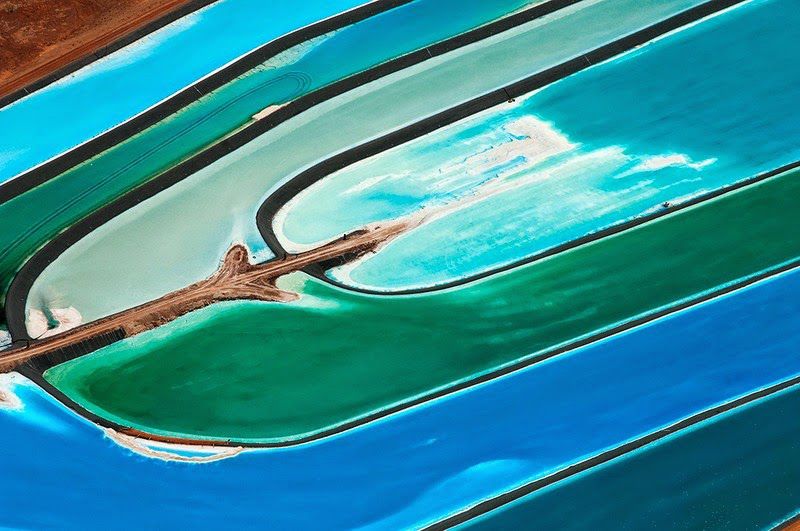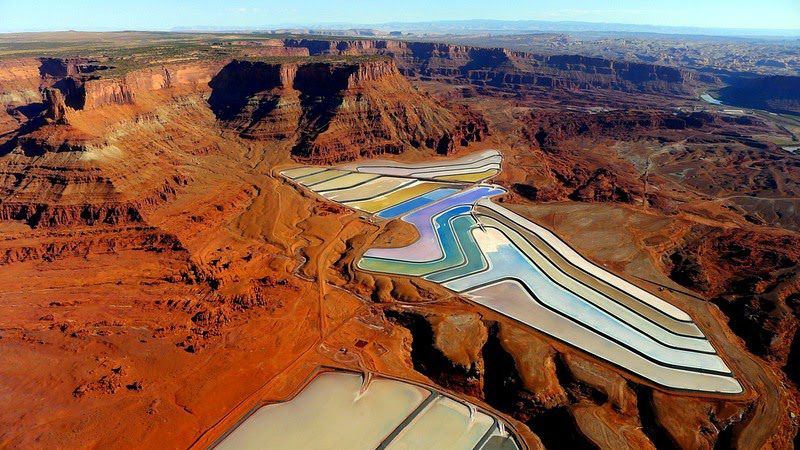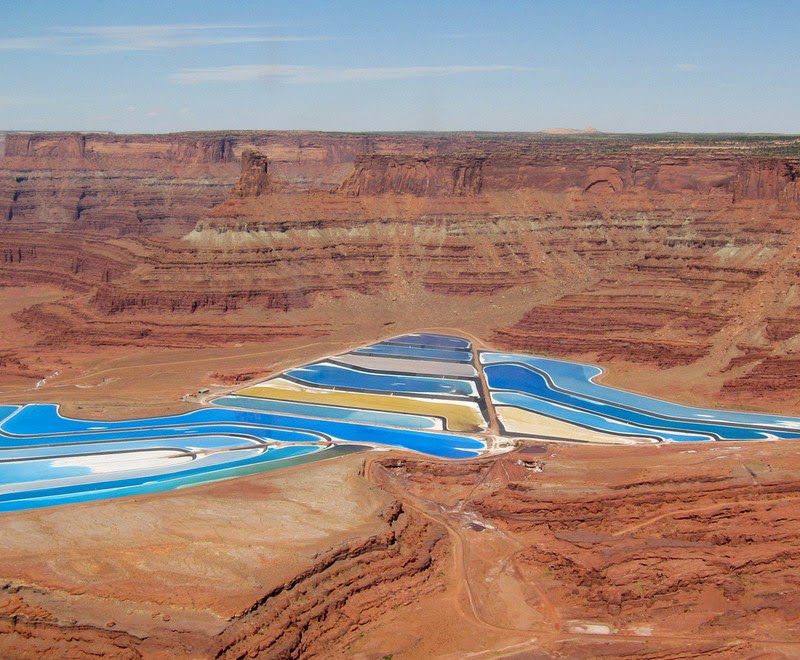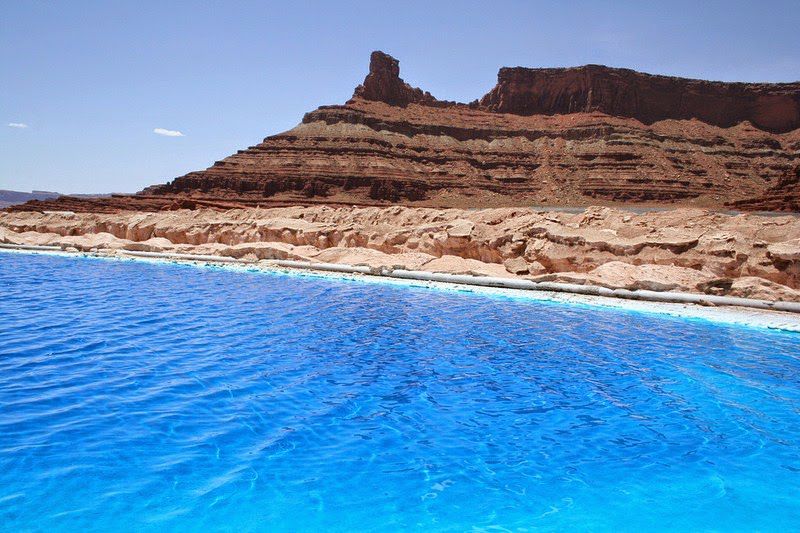The Potash Evaporation Ponds Along the Colorado River Are Utah’s Colorful Secret.
These electric blue shapes in the barren desert are potash evaporation ponds managed by Intrepid Potash, Inc., the United States’ largest producer of potassium chloride. They are situated along the Colorado River, approximately 30 km west of Moab, Utah.
Covering an area of 1.5 square kilometers, these ponds are lined with rubber to contain the salts within. Unlike other salt evaporation ponds that acquire a naturally reddish tinge due to the presence of certain algae, the vibrant blue color of these potash evaporation ponds is a result of an artificially added dye that enhances sunlight absorption and evaporation. Once the potassium and salts are left behind, they are collected and sent off for processing.
Most of the world’s reserves of potassium come from ancient oceans that once covered what is now land. As the water evaporated, potassium salts crystallized into large beds of potash deposits. Over time, geological forces buried these deposits under thousands of feet of earth, forming potash ore. The Paradox Basin, where the mines at Moab are located, is estimated to contain 2 billion tons of potash. These deposits formed approximately 300 million years ago and now lie about 1,200 meters below the surface.
To extract potash from the ground, workers drill wells into the mine and pump hot water down to dissolve the potassium. The resulting brine is pumped out of the wells to the surface and directed to the evaporation ponds. The sun evaporates the water, leaving behind crystals of potassium and other salts. This evaporation process typically takes around 300 days.
Intrepid Potash, Inc. produces between 700 and 1,000 tons of potash per day from this mine. The mine has been operational since 1965, and Intrepid Potash expects to have at least 125 more years of production before depleting the potash ore.
Hits: 0











